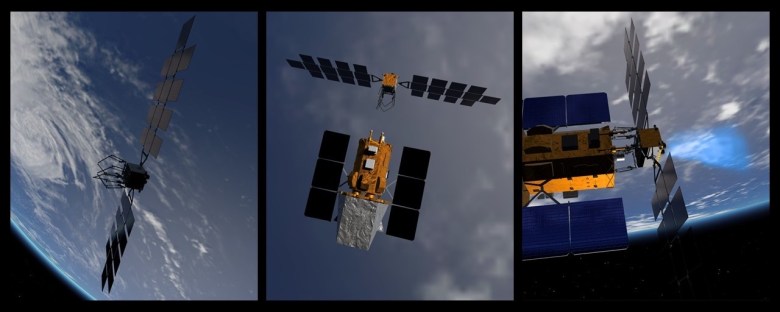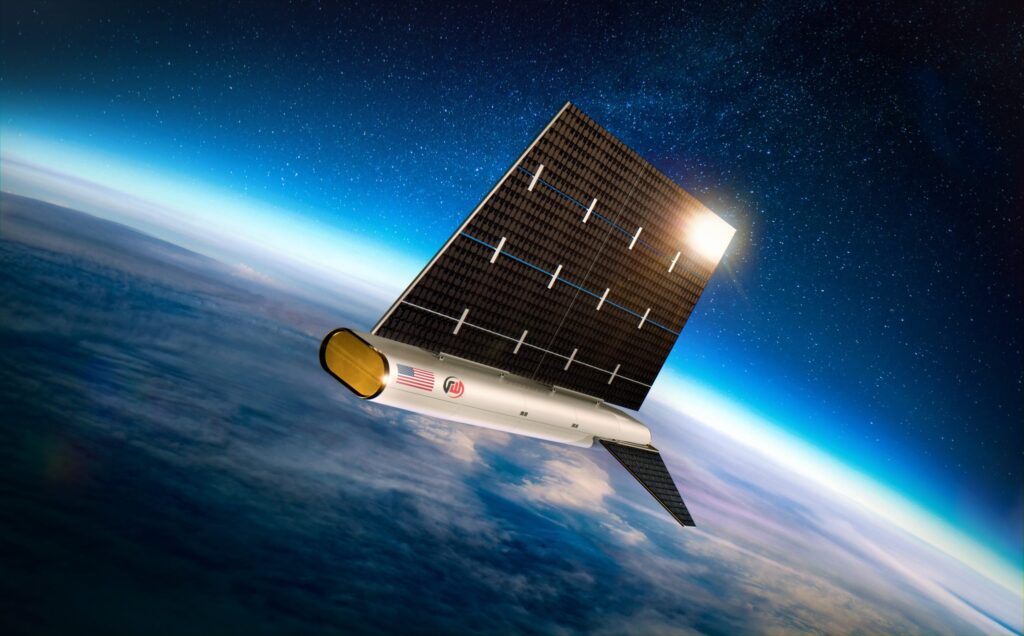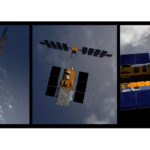Now Reading: Kymeta and iRocket working on multi-orbit Golden Dome interceptor connectivity
-
01
Kymeta and iRocket working on multi-orbit Golden Dome interceptor connectivity
Kymeta and iRocket working on multi-orbit Golden Dome interceptor connectivity


TAMPA, Fla. — Kymeta is working on a conformal antenna that could be integrated into the body of missiles being developed by iRocket, enabling the multi-orbit connectivity they say will be vital for the U.S. Golden Dome interceptor network.
The companies announced a partnership Nov. 19 to leverage the metamaterial technology used in Kymeta’s multi-orbit broadband user terminals to connect IRX-100, a short-range missile iRocket (Innovative Rocket Technologies) flew for the first time last month.
“We can expect these missile interceptors to operate in heavily degraded and jammed environments,” Kymeta chief scientist Ryan Stevenson told SpaceNews via email.
“They need uninterrupted access to targeting data and command-and-control links (inflight track updates) while traveling at extreme speeds, often through contested airspace where GPS, tactical radio frequencies, and single-orbit [satellite communications] are jammed.”
Stevenson said multi-orbit connectivity would shift interceptors from pre-programmed, largely autonomous weapons to fully networked systems able to adapt in flight, stay connected in contested environments and respond to evolving threats with greater precision and reliability.
“Before Kymeta’s conformal multi-orbit solution, missile interceptors were challenged with exotic antennae solutions that were a challenge to task, communicate with, and keep thermally performant,” he added.
“It would take multiple components or subsystems that would consume more weight and power.”
Redmond, Washington-based Kymeta has a proof of concept for the technology, which is at an early stage of development.
New York–based iRocket is designing the 91-centimeter-tall IRX-100 to be integrated with the U.S. military’s Hydra 70 rocket system, aiming to provide early revenues to support the development of Shockwave, a 38-meter-tall vehicle for launching small and medium-sized payloads.
“IRX-100 will use the technology, as will larger missile systems,” said Asad Malik, iRocket’s founder, chairman and CEO.
“This will include new innovations as well as integration with legacy launchers and pre-existing systems. We also see application for integration within our space launch systems.”
Target: Golden Dome
Congress has appropriated nearly $25 billion to get U.S. President Donald Trump’s signature Golden Dome missile-defense initiative started, though the Pentagon has so far released scant details about the program’s technical requirements and architecture.
Trump has said Golden Dome could require up to $175 billion over three years. Analysis from the Congressional Budget Office has put the cost of a space-based interceptor layer alone at between $161 billion and $542 billion, depending on whether the system is limited to defending the continental United States or expanded to broader tactical missions.
Stevenson said a layered defense Golden Dome framework will depend on a fully networked, always-on defensive shield that can detect, track and intercept dynamic threats across vast distances and multiple domains.
“For this to work, interceptor missiles must stay connected to command-and-control networks throughout their entire flight, not just at launch or terminal phase,” he said.
“Multi-orbit connectivity delivers that resilience, and our conformal metamaterial technology makes it practical for next-generation systems by reducing drag, weight and detectability. This is a critical step in enabling a more agile, responsive national defense capability.”
Future conflicts will be highly adaptive, he added, and Golden Dome systems would need continuous connectivity to track shifting targets and counter evolving adversary capabilities.
Heading to the public market
The partnership with Kymeta comes as iRocket prepares to list on the stock market next year by merging with BPGC Acquisition Corp., a publicly listed shell company backed by former U.S. Commerce Secretary Wilbur Ross.
In an investor presentation filed with the U.S. Securities and Exchange Commission Nov. 12, iRocket disclosed about $52 million in funding and capital to date, including around $40 million from the Air Force Research Laboratory and Space Systems Command.
The company aims to raise $75 million from a private investment in public equity (PIPE) round alongside its merger with the special purpose acquisition company, or SPAC, with a pre-money equity valuation of $400 million.
According to iRocket, the $65 million left after paying transaction fees and expenses would support three years of solid rocket motor operations and buildout.
The presentation highlighted a global rocket propulsion market projected to grow from $6 billion in 2024 to $10 billion by 2029. It also pointed to a total $742 million in U.S. government funding available to support solid rocket motor development in the coming years.
Stay Informed With the Latest & Most Important News
Previous Post
Next Post
-
 012024 in Review: Highlights from NASA in Silicon Valley
012024 in Review: Highlights from NASA in Silicon Valley -
 02Panasonic Leica Summilux DG 15mm f/1.7 ASPH review
02Panasonic Leica Summilux DG 15mm f/1.7 ASPH review -
 03How New NASA, India Earth Satellite NISAR Will See Earth
03How New NASA, India Earth Satellite NISAR Will See Earth -
 04And Thus Begins A New Year For Life On Earth
04And Thus Begins A New Year For Life On Earth -
 05Astronomy Activation Ambassadors: A New Era
05Astronomy Activation Ambassadors: A New Era -
06SpaceX launch surge helps set new global launch record in 2024
-
 07Space Force plans new ‘Futures Command’ amid pressure to speed up modernization
07Space Force plans new ‘Futures Command’ amid pressure to speed up modernization



















